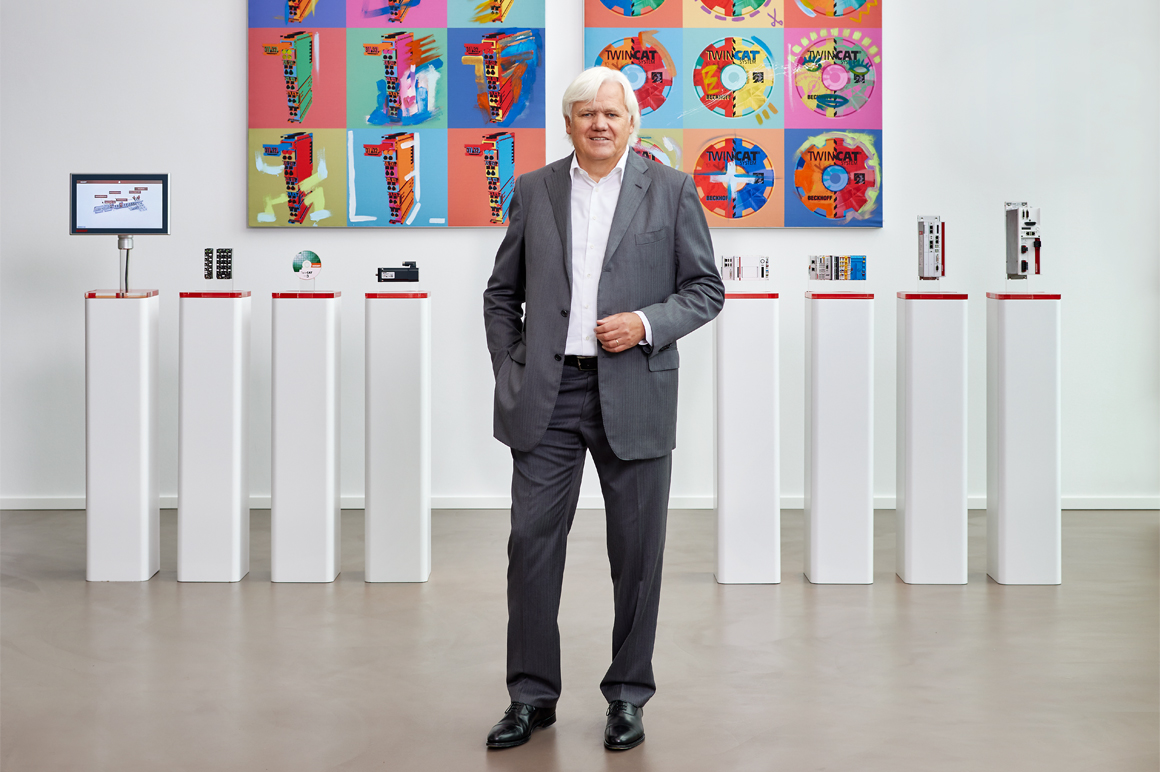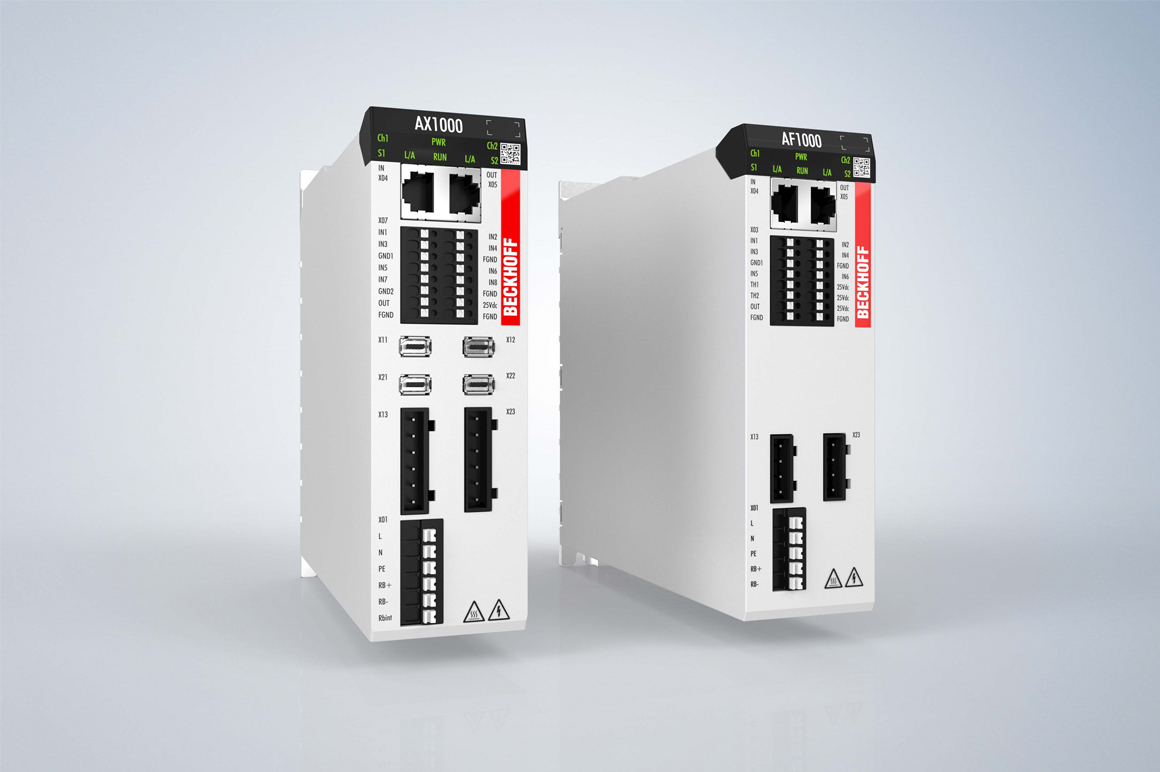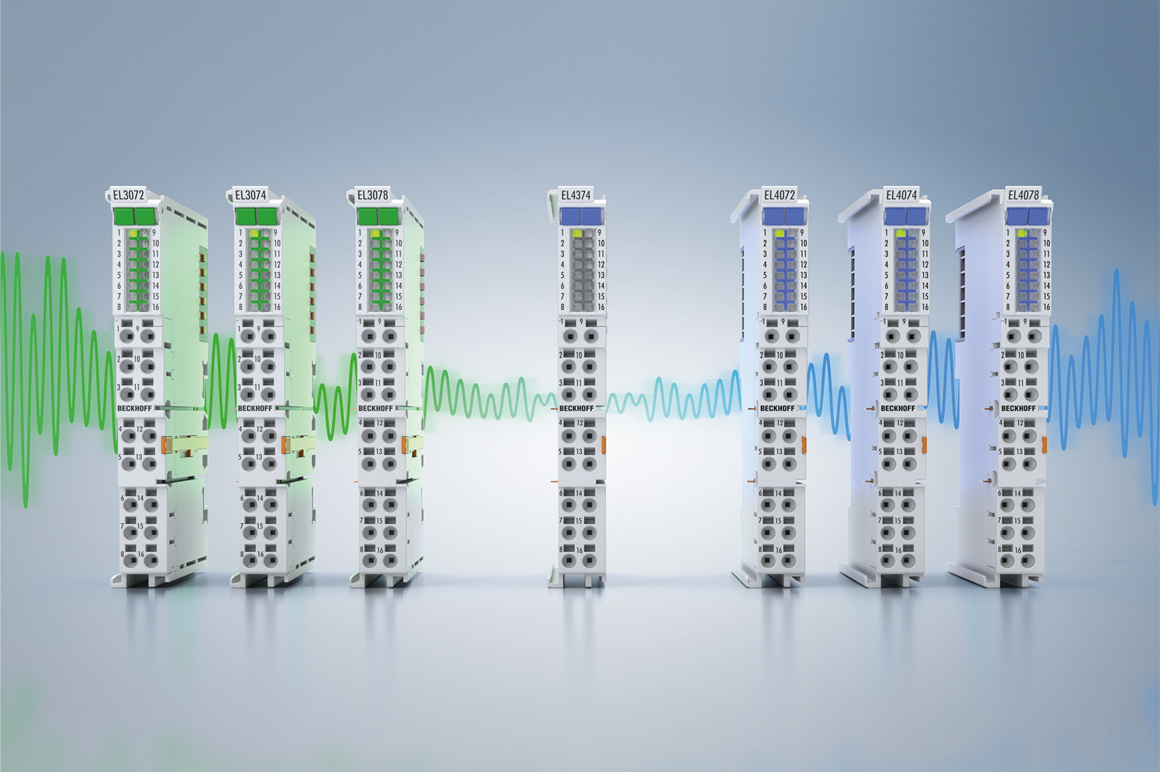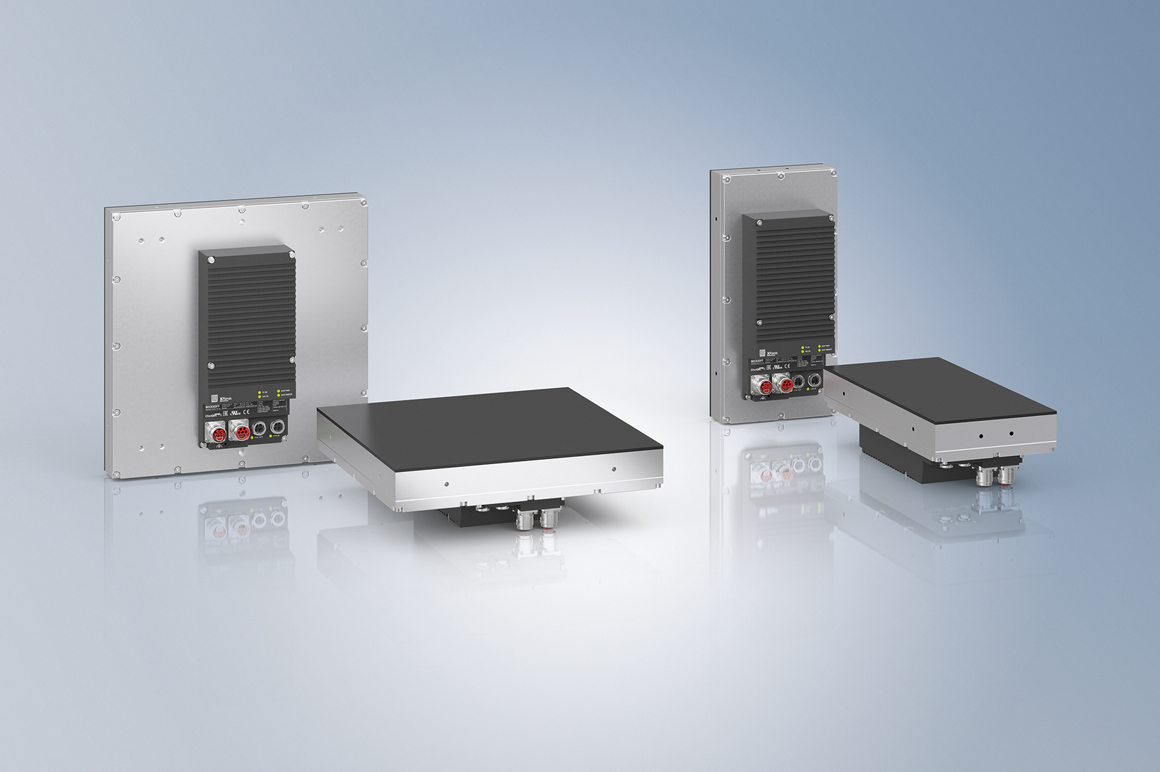

Published in: Open Automation 06/2024, VDE Verlag, www.vde-verlag.de
Beckhoff Automation, like so many other businesses, is currently facing economic challenges. But the company is responding with energy and an optimistic outlook: TwinCAT PLC++ is a new generation of PLC in the TwinCAT system that enables a quantum leap in runtime and engineering performance. The new, high-performance, cost-effective AX1000 drive technology is a strong response to the offerings of Asian competitors. Hans Beckhoff, Managing Director of Beckhoff Automation, talks about these and other innovations to Ronald Heinze, editor-in-chief of Open Automation, about these and other innovations.
“Automation is developing in line with the world’s gross national product. There is no growth without automation,” says Hans Beckhoff optimistically. “In addition, PC-based control technology is continuing to gain market share.”
However, the forecast for the current year is cautious, as Hans Beckhoff emphasizes. “We are experiencing a strong double-digit decline in sales,” he clarifies. “In fact, this figure could even start with a 2. This means we are losing one to two years of growth.” After an exceptional order pattern in recent years, with sales growth of around 80% in total over the past three years, the current economic situation is slowing the company down noticeably.

Three challenges
In addition to the stock crisis, the managing director mentions two other major challenges: the looming economic crisis in the capital goods sector and increasing competition from Asia, especially China.
For Beckhoff, however, these challenges are no reason for despair. “Our incoming orders are showing slight signs of recovery,” Hans Beckhoff continues. “Our customers’ warehouses are slowly emptying and we expect them to have worked off the overstocking effect by the first quarter of 2025 at the latest,” he predicts.
“This is the fifth economic crisis that I have experienced; they occur fairly regularly every five to eight years based on the 'pig cycle' theory. Capitalism is a self-regulating system that depends on many parameters. Unfortunately, anomalies occur time and time again, which we then experience as a boom or a crisis. Fortunately, however, the market has self-healing powers, which means that every crisis, like every boom, comes to an end. “We know this and are prepared for it. It’s a little bit like being a farmer who fills their barn as a precaution when winter approaches. In other words: We are prepared,” adds Hans Beckhoff with a smile. He expects growth of around 10% again next year. The development departments at Beckhoff are working with renewed commitment, as are sales and marketing, and there is no short-time working in production.
According to Hans Beckhoff, there has been an increasing number of manufacturers offering individual automation components in China for many years. “System manufacturers were seen more rarely,” he continues. “This is changing now. Providers with a system architecture are gaining ground.”
He explains: “The situation has changed dramatically in recent years. Asian manufacturers, especially from China, are increasingly taking on the role of system provider and challenging us,” says the company founder. But despite this competition, he remains confident: “German manufacturers, including Beckhoff, still have technical advantages, and our customers are prepared to pay higher prices for quality and innovation in order to be able to solve complicated technological tasks.”
Beckhoff is responding to the increasing competition from China with innovative strength, which also includes cost optimization. “We also have to be competitive when it comes to individual components,” he emphasizes.
New generation of control technology
Beckhoff Automation will be presenting a number of technological highlights at the SPS – Smart Production Solutions – exhibition. Particularly noteworthy is the new generation of control technology: TwinCAT PLC++ is a completely new development that enables a significant leap in engineering and runtime performance – in combination with the well-known TwinCAT advantages of end-to-end integration of all automation functions, compatibility, and openness. “We have invested in a completely new technology here which allows us to achieve the best performance values,” says the managing director. “A huge advantage for our users, because when it comes to high-performance machine controls, the productivity of the machines can be increased significantly by faster control technology!”
“With TwinCAT PLC++, we can execute the control code up to twice as quickly compared to previous solutions, thus pushing the previous performance limits to a considerable degree,” explains Hans Beckhoff. “As an additional highlight, the new TwinCAT PLC++ compiler makes it possible to further optimize the control code in terms of execution time, thus achieving another significant increase in execution speed, with a special performance option. An additional gain by a factor of 2 (or more) can be achieved in typical applications.”
The software is based on the languages described in IEC 61131-3. “We support four of the programming languages defined in the standard; we have dispensed with Instruction List, however,” says Hans Beckhoff. “Our 30 years of experience with IEC 61131-3 has been incorporated into the new software.” As a member of the German IEC group, Beckhoff has a direct influence on the latest developments and best practices in standardization. The special thing about TwinCAT PLC++ is that it achieves maximum compatibility with the fourth edition of IEC 61131-3. With the resulting portability, it facilitates the exchange and collaboration between different automation systems. In the future, it should even be possible to exchange program code with program solutions that comply with the “pure doctrine” of IEC 61131-3 in a similarly strict manner.

Familiar and proven features have been retained, while key components of the development environment – the editors and compilers – have been redeveloped based on IT standards. One point worth emphasizing is the possibility – due to the comprehensive DevOps integration – of using the technological foundation for CI/CD (continuous integration and continuous deployment). This end-to-end integration of DevOps principles into the control environment is intended to improve code quality and increase the reliability of the control system.
“Through advanced compiler technology and the comprehensive and seamless integration into the existing TwinCAT ecosystem, our users can now benefit from a faster development cycle, which significantly reduces the time-to-market for new machines,” explains Hans Beckhoff. In particular, with the option of optimizing the control code in terms of execution time via the new compiler – an option that is familiar from the IT world – an industrial PC with less computing power may be sufficient for the previous machine control system, thereby reducing hardware costs. When using TwinCAT PLC++, the customer can decide whether they need more performance or lower costs in their project. “Probably both,” smiles Hans Beckhoff. The new control technology runs on all IPC platforms, including the ARM® architecture.
The development work also focused on the specific needs of users, resulting in a PLC that is not only extremely advanced in terms of technology but also perfectly tailored to requirements in the field. In combination with the new TwinCAT MC3 motion control generation, complex applications can be controlled and monitored even more efficiently, further strengthening the competitiveness of Beckhoff.
From an engineering perspective, TwinCAT PLC++ achieves shorter throughput times from control code development through to commissioning and the entire machine life cycle. This is achieved by reducing the user interaction times with the help of shorter project loading times and an improved translation process. The minimized project lead times significantly reduce costs and also enable new machines and systems to be in introduced into the market more quickly. The feedback from over 20,000 TwinCAT users worldwide played a major role in perfecting the implementation, resulting in an optimized, intuitive user interface as well as improved functions that make work easier for users. Developers receive special support from a programming assistant based on TwinCAT Chat, expandable code snippets, smart shortcut functionalities for guided code creation, an online-offline code comparison, and a favorites pool.
An integrated converter enables the efficient transfer of existing program code, so that existing expertise is easily available in TwinCAT PLC++. Among other things, existing TwinCAT Scope and TwinCAT HMI applications can continue to be used unchanged, meaning that switching involves little effort.
According to Hans Beckhoff, C++ as well as MATLAB® and Simulink® can be seamlessly integrated. A Python API is also available for TwinCAT Analytics. “Python is not suitable for deterministic real-time control in the sub-millisecond range,” says Hans Beckhoff. “However, the programming language is well suited to tasks such as collecting and processing data in machines and for other IoT applications.”
“Our own Beckhoff Linux® distribution is implemented as the operating system on all medium and large platforms,” says Hans Beckhoff. This means that, together with TwinCAT/BSD and Windows, three operating systems are now available for the Beckhoff systems.
Quantum leap in drive technology
In addition to control technology, Beckhoff will also be presenting important innovations in the field of drive technology for the small to medium power range. Despite its compact design, the AX1000 – a highly optimized servo drive that is fully integrated into TwinCAT on the software side – offers all the functions that are also available in the larger drives of the AX series. “We developed the compact AX1000 to meet the increasing demands of the market. It is a cost-optimized product that nevertheless meets the highest technological standards – a quantum leap in drive technology,” says Hans Beckhoff. “The ‘all-electric machine’ needs powerful but also inexpensive drive technology! The aim is also to achieve a truly competitive price level for the global market. We understand how intense the competition is and are responding to it.” The company is hoping that this drive technology will also be successful on the Chinese market.
The AX1000 is available in two different versions: in the low power range with single-phase AC 1 x 230 V supply from 1.65 A to 6.9 A and in the higher power range with three-phase AC 3 x 400 V supply from 1.65 A to 6.9 A. Despite its compact dimensions, it features an integrated power supply, DC link capacitors, ballast circuit and, in most variants, a ballast resistor. Both versions are available as 1-channel and 2-channel variants. AM8000 synchronous servomotors with OCT as well as asynchronous and reluctance motors with or without position encoders are supported.
At the same time, Beckhoff is launching the AF1000, a variable frequency drive for simple applications such as conveyor belts, fans, and pumps. The cost-effective drive amplifier is available in two different versions: a single-phase AC 1 x 230 V supply with a power range of 0.37 kW to 0.75 kW and a three-phase AC 3 x 400 V supply with a power range of 0.37 kW to 3 kW. Despite its compact dimensions, it features an integrated power supply, DC link capacitors, ballast circuit and, in most variants, a ballast resistor. As with the AX1000, the control voltage is generated from the DC link. Both versions are available as 1-channel and extremely cost-effective 2-channel variants. Synchronous servomotors as well as asynchronous and reluctance motors without position encoders that are operated with voltage/frequency control or vector control are supported. “With the AF1000, we can offer a cost-effective drive solution that is fully integrated into the TwinCAT system via EtherCAT and offers maximum convenience during commissioning and diagnostics,” explains Hans Beckhoff. As with all servo drives from Beckhoff, commissioning of the AF1000 drive is carried out with the well-known Drive Manager 2.

Various products optimized for price and performance
According to the managing director, other products have also been optimized in terms of price and performance. The field of I/O terminals, for example, has seen some new developments. “With the new EL14xx and EL24xx series, we have completely overhauled the portfolio of digital terminals for standard signals,” says Hans Beckhoff. “They now offer 16 bit resolution at a 12 bit price level – a significant step forward while maintaining the same universal application possibilities.” The new series complements the existing range. The analog terminal series has also been redesigned and optimized in terms of price and performance.
The range of industrial PCs is being expanded continuously too. “We are now integrating the 11th, 12th, and 13th generation of Intel CPUs into our computers. This means that even the ultra-compact C604x Industrial PC can now be equipped with 24 cores.” He adds: “Just a few years ago, we referred to computers like that as ‘big iron‘. Today, this equipment is in our standard computers.”
For the XPlanar planar motor system, new tiles measuring 320 mm x 320 mm are being introduced. The previous size was 240 mm x 240 mm. “The new motor tiles feature new electronics with an even finer resolution,” emphasizes Hans Beckhoff. They are therefore faster, more precise, and can transport more load.
The XTS linear product transport system has been expanded with a new EcoLine motor module, which also features redesigned electronics. “This 50 cm long module is ideal for implementing cost-sensitive standard applications,” he adds. “Due to the inexpensive price, it can be used for significantly more applications – including those in conveyor technology, for example.”
The TwinCAT OPC UA Nodeset Editor is a piece of software for displaying, customizing, and creating the XML-based description files of OPC UA information models. “This makes it easy to read companion specifications or customer-specific information models into machines,” says Hans Beckhoff.
Another much-debated topic is virtual controls. “We have been proficient in virtual controls for many years,” Hans Beckhoff clarifies. “Up to now they have only been used in special applications. When it comes to direct control of machines, virtual controls do not offer any real advantages.” In his opinion, intelligence incorporated directly in the machine delivers better performance. In the field of IoT applications, however, virtualization can lead to cost savings and maintenance benefits.
The game changers of automation
Hans Beckhoff regards control cabinet-free automation with the MX-System as one of the game changers of future automation. “The MX-System will revolutionize automation in the same way that bus terminals have become a basic building block of automation since the mid-1990s,” he explains. The first 42 module types will be available from as early as January 2025, and 100 should be available by the end of next year. The complete modular system with up to 150 modules should be available by 2026, further increasing flexibility and efficiency in automation. “The first machines with our MX-System are already in the field,” reports the managing director.
Another forward-looking topic is the use of artificial intelligence (AI) in automation. “We hope that our TwinCAT Machine Learning Creator platform, which can generate efficient neural networks largely automatically, will drive the spread of ML technology for the purpose of machine control and data analysis. This will significantly lower the hurdle for the use of AI in automation. To put it in a nutshell: Excel knowledge and our TwinCAT Machine Learning Creator tool will be enough to make a machine intelligent,” says Hans Beckhoff. The new products will be combined with a prepared platform that integrates both software and finely tuned hardware. “This enables us to create a cost-effective, high-performance solution that is easy to implement in practice.”
According to Hans Beckhoff, large language models (LLMs) have a major influence on automation. “We have already integrated LLMs into our TwinCAT Engineering environment as standard, so that users can improve their productivity and quality with this tool chain. And we are working on solutions in which LLMs support the control system directly on the machine,” says Hans Beckhoff. LLMs could also be run locally soon. Hans Beckhoff is convinced that humans and machines will speak the same language in the future.
Outlook
With an impressive portfolio of innovative products and technologies and a clear strategy for the future, Beckhoff Automation is positioning itself at the SPS – Smart Production Solutions – exhibition as a leading supplier in the field of automation technology: ready to drive the market forward even in difficult times. “How will Germany, Europe, and the whole world get out of the crisis? With energy and optimism!” emphasizes Hans Beckhoff. “And that applies to Beckhoff too!”
“We have always gained new customers in times of crisis. We have developed competitive products, and we want to secure new projects and orders at SPS. As Winston Churchill said: ‘Never waste a good crisis’,” says Hans Beckhoff. “We are well prepared.” With a full product portfolio and innovative approaches, the company is ready to emerge from the current situation even stronger than before.





